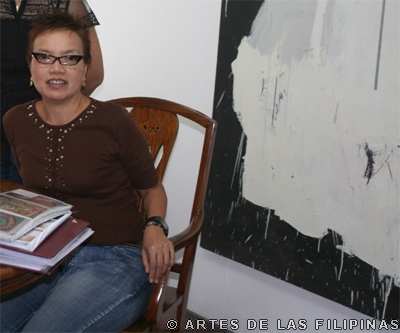


LAST FULL SHOW
Danilo Dalena Retrospective
Mahirap Magsalita ng Tapos
March 2017–Magkalinawan na tayo sa simulat simula pa. Hindi ito ang last full show ni Danilo Dalena. At lingid sa kaalaman ng karamihan, naging abala naman siya gayong tila nanahimik matapos ang makalawang survey ng mga obrang idinaos rin ito sa Sentrong Pangkultura ng Pilipinas noong 1990.





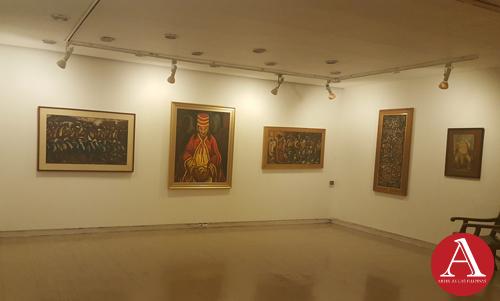
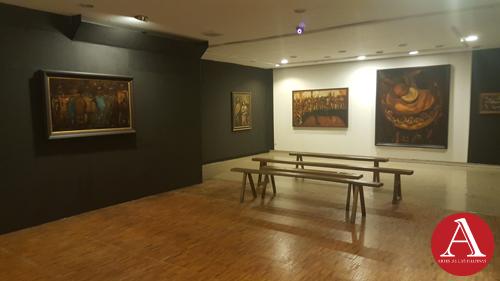
Mula kay Dalena mismo nanggaling ang pamagat na LFS. Ika niya : mala all-star cast finale iyan sa Alibangbang (bar sa Cubao na pinaghugutan ng mga tumanyag niyang larawan na mananayaw), o special llave kasali lahat ng mga bidang manlalaro ng Jai Alai (Dalena HQ matapos Dalena HQ matapos matanggalan ng trabaho sa pagpapasara ng mga lathalain noong martial law). Kung Baga ‘ all hands on deck’ sa bapor,’pasiklaban’ o patalbugan sa entablado, royal rumble sa WWF. Bongga! Sabi nga ng mga naghahanap ng kaaliwan noong dekada’70, yugto kung kailngan unang sumikat si Dalena bilang pintor at iskultor.



















Noon pa man asiwa na si Dalena kapag itinatali ang kanyang mga Gawain sa lohika ng istilo, o kapag naihahanay siya sa mga kampo kampong nagtatagisan ng galling sa mundo ng sining. Kaya naman, kahit na makailang beses na ring sinubukan ng kritiko at historyador na lapatan ng kronolohiya ang mga likha niya (Jai Alai ang pambungad bahagyang pupuslit si Quiapo at Alibangbang, sumunod ang mga serye ng sine, Port Area Authority at ehersisiyo at pumupwesto ang buhay Kamuning sa gawing hulihan) manaka-naka parin tumiwalag ang mga ito sa pagkakasunod-sunod na kalimita’y dikta ng payak na pagsusuri. Nariyan na nga’t naturingan na siyang expressionist pati na social realist. Gayunpaman, nagbabakasakali ang LFS na matinag kahit kaunti ang ganung pagsasalugar upang mabigyang puwang din ang mga nagawa ni Dalena na lihis sa mga kategoryang nakagawian na. Iginigiit rito na gaya na rin sa kaso ng ilan pang manlilikhang “gago at totoo” (iyan ng self-identification ni Dalena noong 1990)nanlaban sa mga masyadong pininong pagkasalansan o denomerong pag uuri ng mga obrang may kakayanan magbigay anyo sa kaalaman. Tinataya ring mas may pag asang magpatuloy ang pagbibigay kahulugan sa sining kung bibigyang atensyon ang teknikal kalidad nito kasabayan ng pananarinari sa dinamiko ng lulan at panahon. Sa ganitong paraan marahil mas masusuing mahihimay at matatahi ang relasyon ng porma sa mga kondisyong ng produksyon at sirkulasyon na particular o tukoy sa pagkakataon naisapubliko ang obra. Dito inuugat ang sadyang di linyar na paglalahad ng LFS, sa pagsubok na umalpas sa pagkaktaon na iisang pananaw o linyang naging gasgas na.


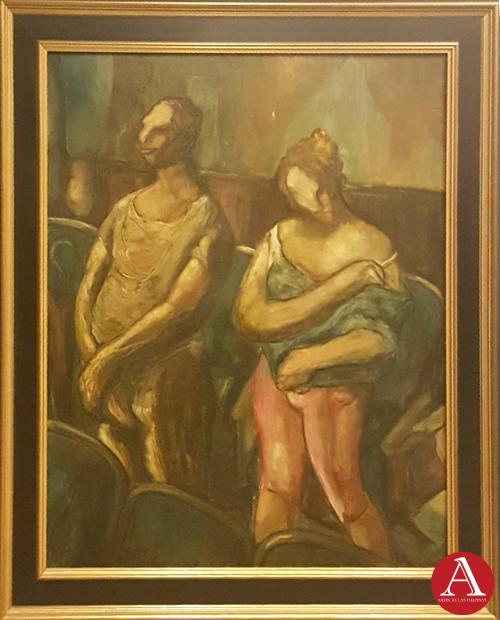






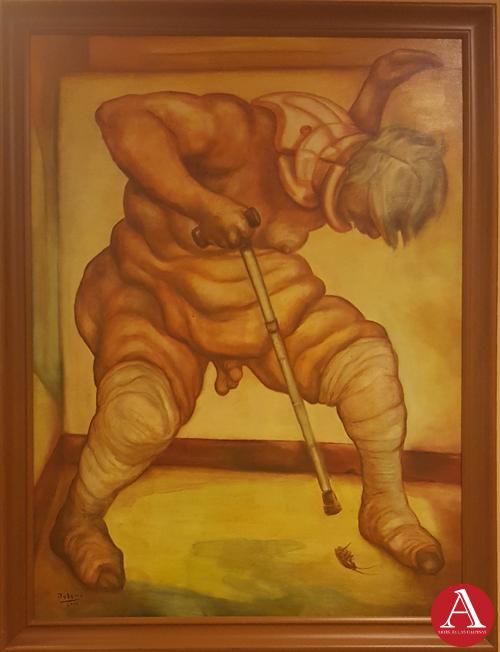









Bakas sa mga mala-seryeng eksenang nakatanggal ditto na lulan ng palalim na pagtangi ang paggalugad ni Dalena sa tinubuang baying pakil at mga sulok ng madungis at mabangis na lungsod kung saan siya nadako bilang magaaral , empleyado at tambay. Kita rito na sabayan niyang kinakarinyo at tinutuya ang kanyang subjek. Nariyan sa mga pagbagtas niya sa mga di hawig na espasyong yaon ang utak, puso at katawang karaniwang Pilipino, ang matalas magmatyag at makiramdam ang maselan sa amoy ngunit nagkakasya sa init sikip alinsangan at nakikipag girian para sa salat na pagkakataon.Sumisirit sa mga likhang narito ang sensibilidad na handang handang ibulgar ang ikinukubli ang kapanghian at pagbabara ng mga palikuran, ang pagkutkut ng anay sa sandigang talasalitaan, ang pigil hiningang usok na sumusuot sa kalamnan at baga ng nampepeste at pinipeste, mga luray luray dahil ngat napabayaan inabuso at tumatandang katawan, ang pagkahalay ng pagitan ng laman at pagtagas ng tabod, ang walang yuming paglilinis ng singit at puwit, pati na ang desperadong pagpapamacho ng geriatric na nilipasan nan g libog. Pait imbis na tamis ang kalimitang pabaon ni Dalena sa kanyang mga gawang tumawid sa pananalamin at pagkapayaso sa gitna ng nakakasirang ulong trahedya at kontradiksyon. Nabibistahan rito ang pagbibida sa abilidad na umukit ng puwang para sa sabayang debosyon at dibersyon.











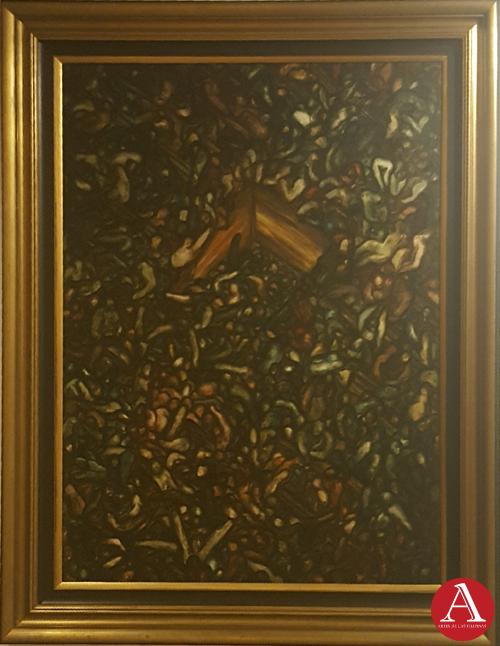
Naaninag sa mga obra mapa larawan man iskultura o instalasyon ang katauhan ng artistang di mapakali at may kahandaang igiit ang kalayaan ng indibidwal na pumupumupusiosyong taliwas sa kaayusang namamayani. Animoy sinabuyan ng lupat dumi at pinakapitan ng libag ang paleta, kanbas, baul ng mga materyales ma ga,it ni Dalena, Parang kiti kiti sa kalikutan ang mga linya niyang bumabalingkas sa kalibadbaran ng mga pigurang kundi gumiling, nagparaaos , namboboso, namamanata, dumadahak, dumudumi, umiihi, nagsusuka o nasa bingit ng pagkakahandusay, Buhay kahit na namimiligro ang kanilang estado. Sa pagkakababad sa komiks, ritwal ng bayan , pelikulat ordinaryong pakikipagtuos sa araw araw na buhay nakamitsa at nakahanap ng tagpuan ang paglikhang ito. Kaya rin naman nagkakaroon ng saysay sa imahinasyong popular at artistiko ang obrang may mga temang abot isip at pormang pamilyar. Bihirang bihira nan a manahimik ang mga kartakter at lulan sa mga kwarto, lagit lagi silang may ipinahihiwati o tinutungo kahit na pagkalugmok rin naman ang malimit na hantungan . Solo man o nakikipagbalyahan sa iba pang katwan, ang tauhang hayagan o nagmumulto sa mga espasyong likha ni dalenay tuwinang inalpasan nan g kaakuhan. Mga kwardro lamang ng mukha ng matalik na kaibigan ang naiba sa ganitong banda.
Di rin maitanggi ang katapangang ipinamalas ng iginuhit na mga editorial cartoon at ilustrasyon ni Dalena bagaman salungat pa rin ang mga ito sa linyadong alyansang pulitikal na pinili ng karamihan ng kanyang mga kasabayan sa propesyon. Sa ganitong konteksto ng pagkakaroon ng sariling palo rin nating maaaring basahin ang unang sabak ni Dalena sa paggamit ng di kumbensyonal na mga medium: tinunaw na platong resin, pambalot ng tinapa, upos ng katol, pulutong ng mga pare-parehong mga sapatos, mga condom na hulmahan, pati na mga talunan na hai alai tiket. Gayon dinmarahil ang pagsipat sa paglahok ni dalena sa mga Gawain o mga tinawag na pahulo ng Shop 6 noong mga gitnang taon ng 1970s. Inilunsad sa mga espayo ng Kalinangan ng Lahi sa Cubao, CCP at sa Sining Kamalig, di minsanan silang inulan ng puna dahil sa kanilang mga gawang wala naman daw katuturan, nagmamalabis lang sa paglalaro ng porma’t materya, di mawariang taktika sa pagpapalabas. Lalo na noong dekada ng 70s, maituturing itong mapaglarong sundot na gumigiit na tradisyunal na pagpipinta, paggupit at paglilok lamang ang awtentikong ekspresyong Pinoy. Hamon din ito sa mga pormang mas kayang kasangkapinin ng merkado. Sa ganitong banda rin maarin ihanay ang angking kapilyuhan , kagaspangan at pagkabagot sa pagmamalinis at kahungkagan na nagging marka nan i Dalena, mga katangiang masidhi pa din sa gitna ng knyang pag-usad sa estadong senior, pagkakaroon ng karamdaman at katuwang na panghihina sa produksyo . Gayunpaman , sa katotohana’y marami pang baling naka-amba si Dalena na di sukat mapagkasya sa maambisyon n ngang pagtatanghal ng LFS. Diyan na rin nga mahihinuha na ang tunay at lantarang intension ng LFS ay mistulang Extended Run.
Last Full Show takes off from where the larger public was last served the broadest sweep of Danilo Dalena’s body of work in his 1990 survey exhibition also at the Cultural Center of the Philippines. Fuelled by his virtual absence of the gallery circuit for over 25 years, the perception that Dalena had hibernated from art all those years is dispelled as LFS reveals suites of drawings and paintings on recently done even as the artist has been slowed by several health crises . Characteristics of Dalena’s signature affinity with the scatological and repellant, what be of particular interest is his yet unfinished series of images referencing unseemly acts and antics in seedy movie houses. While loosely taking on the structure of cinema with establishing sequrnces, transitions, freeze flames, and denouements, LFS is posited as a grand unfolding rather than definitive account. Dalena himself insist that the wordplay be taken in the spirit elaborately risqué closing numbers of his famed Alibangbang (bar) series and the final all-star game of the now moribund Jai Alai where the performance goes full throttle and the one-upmanship is cuttgoat and in your face.
Photograph courtesy of the CCP Library and Archives







